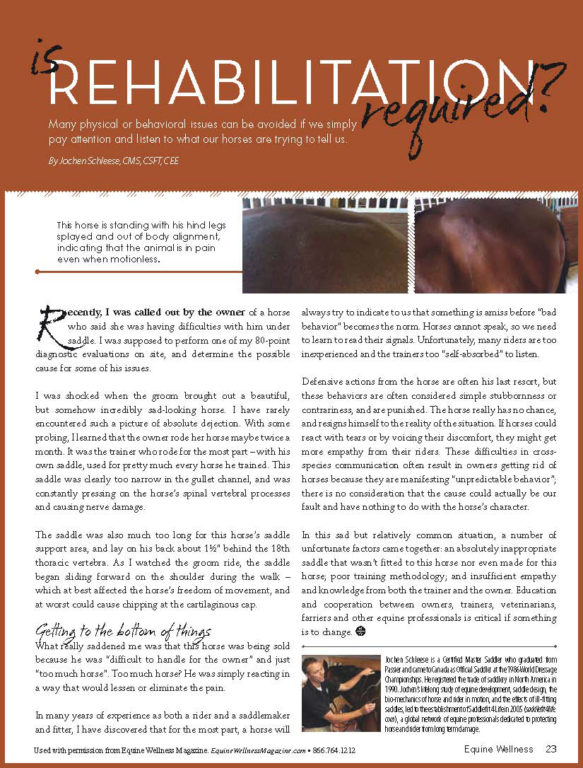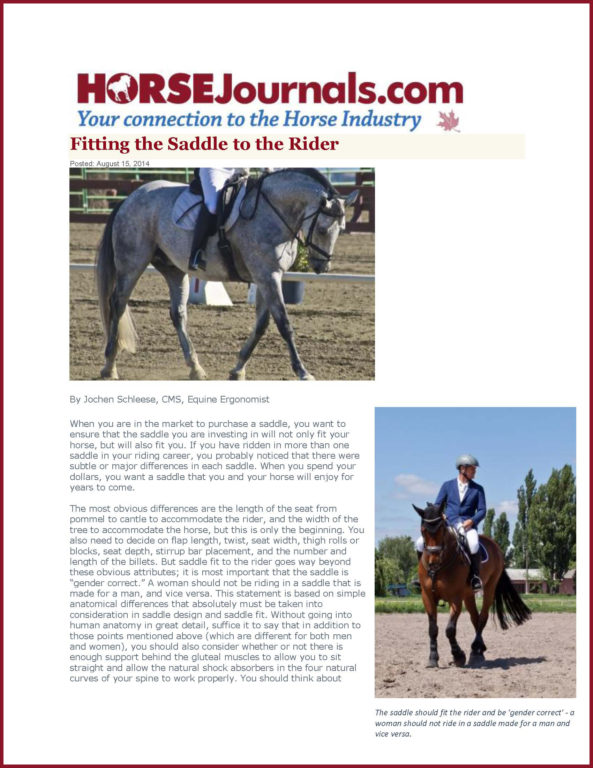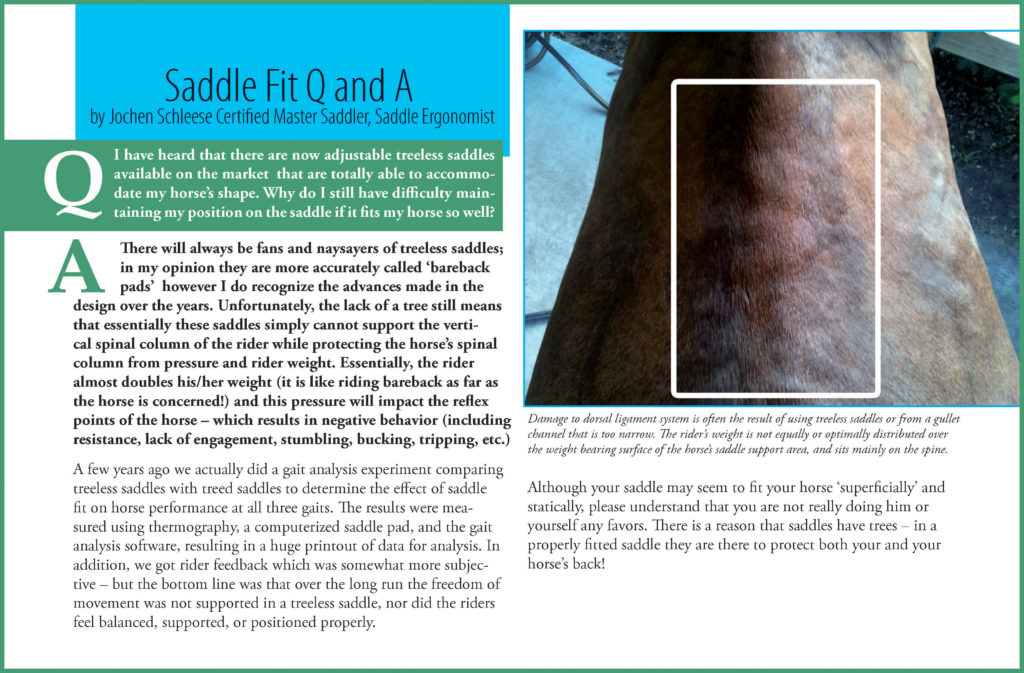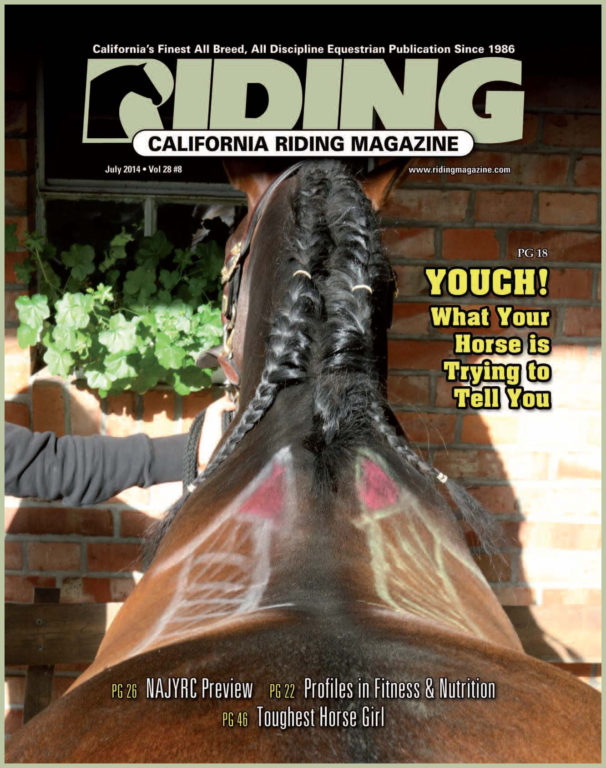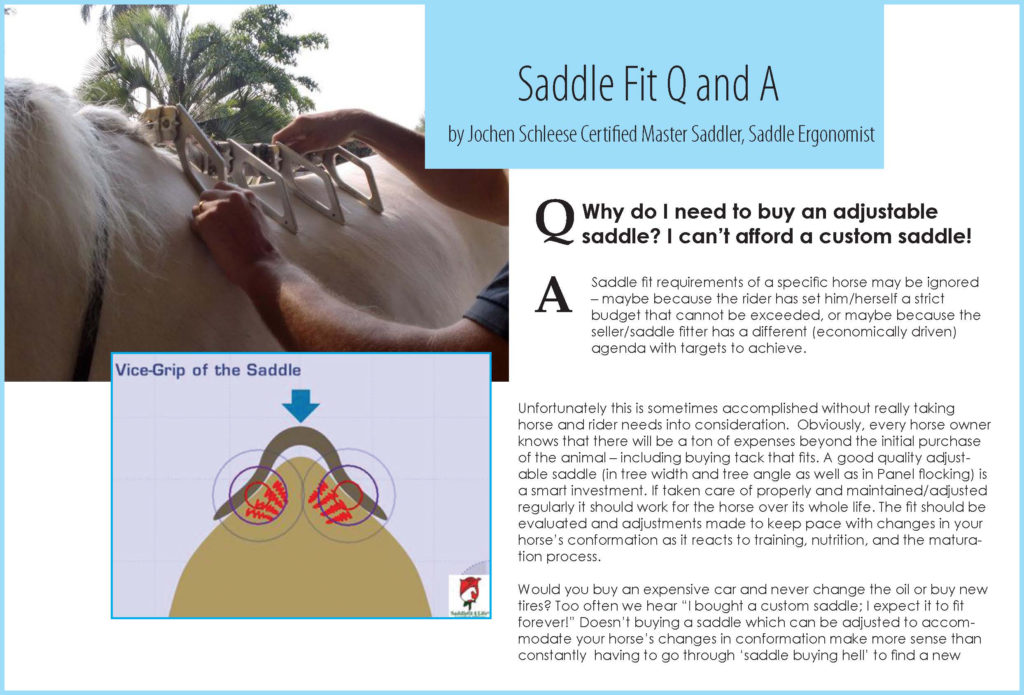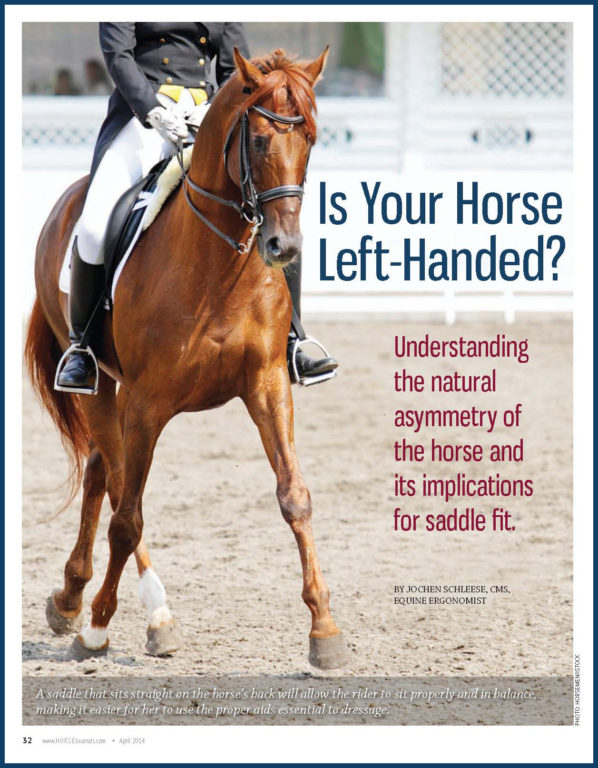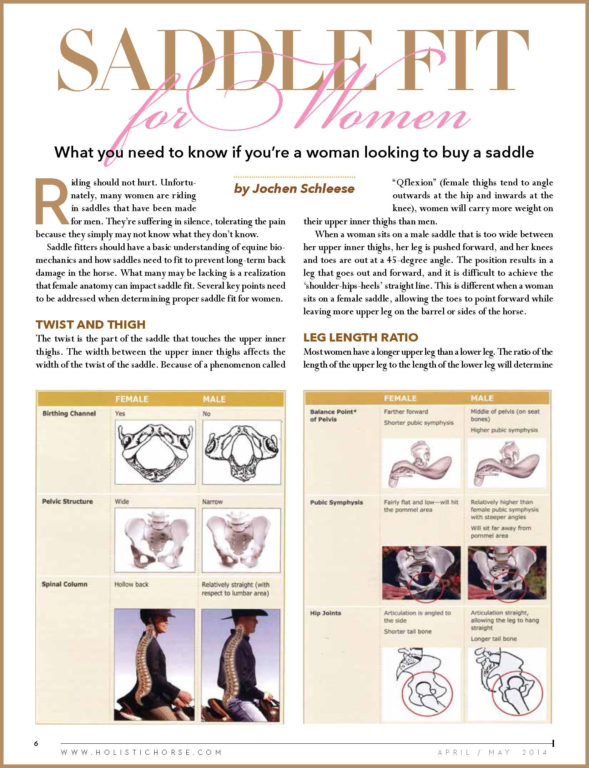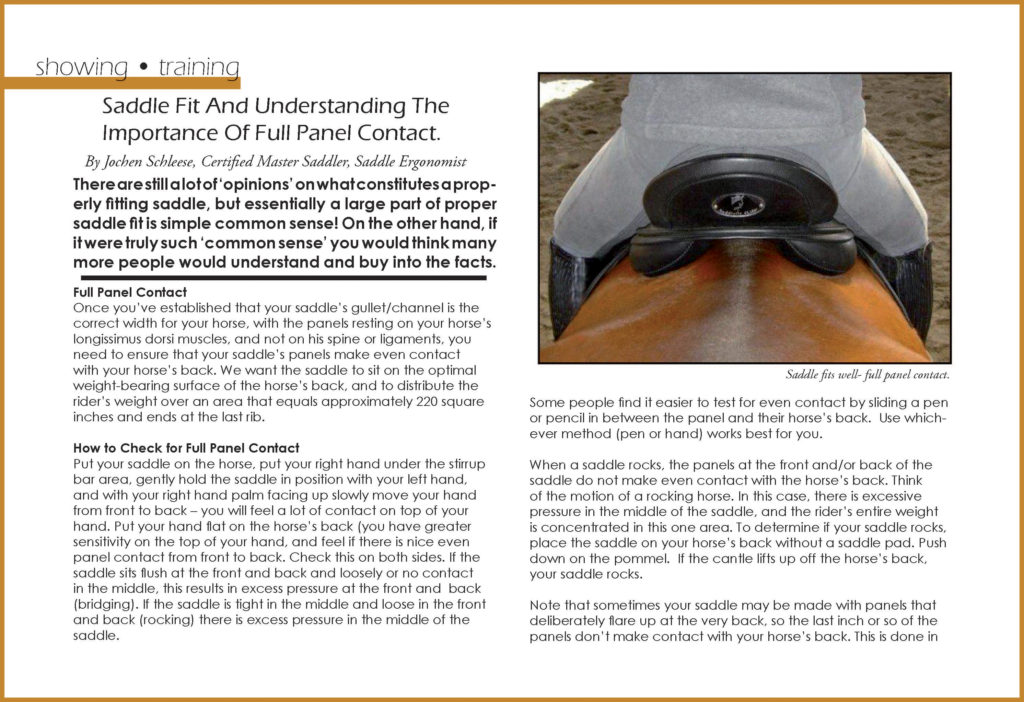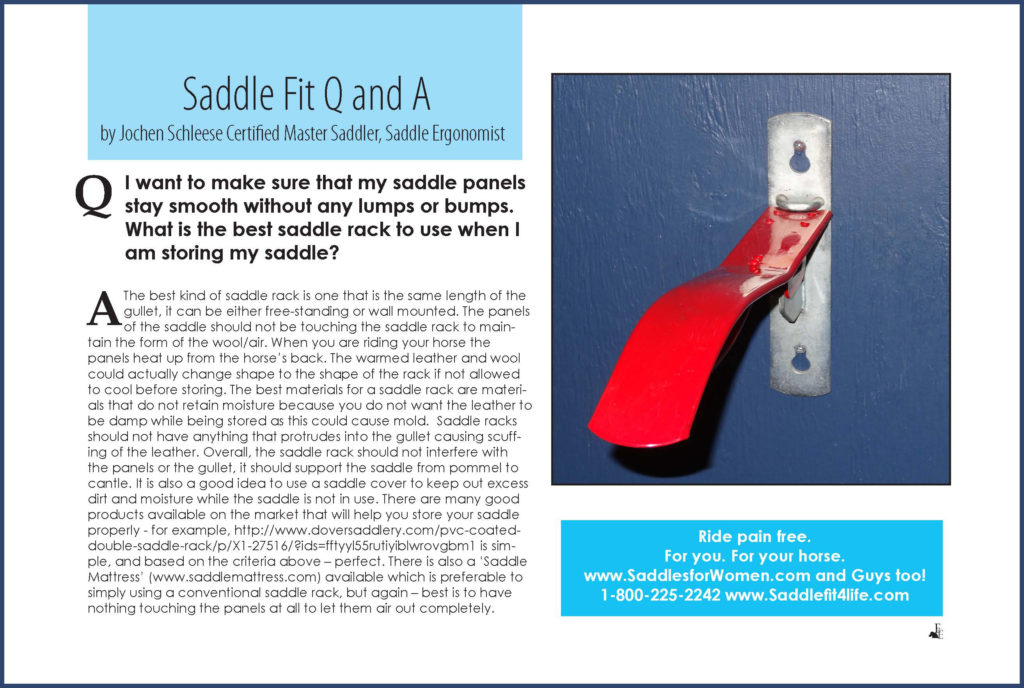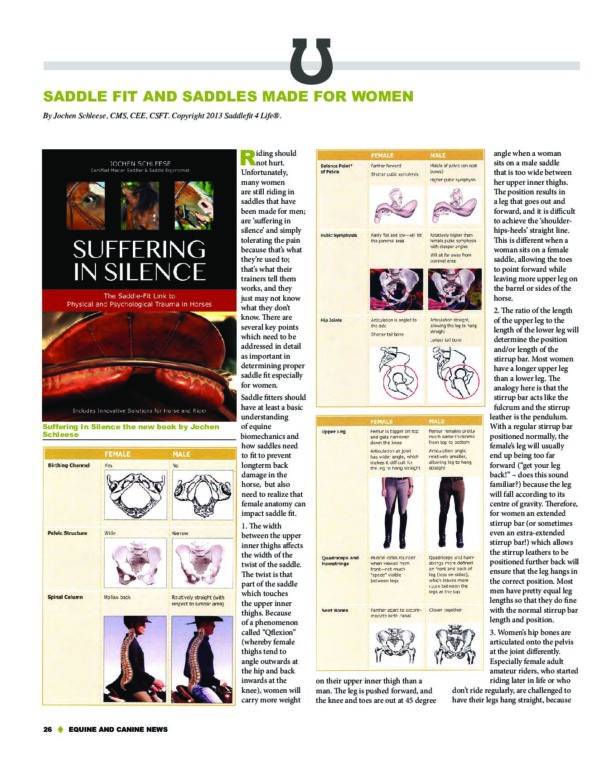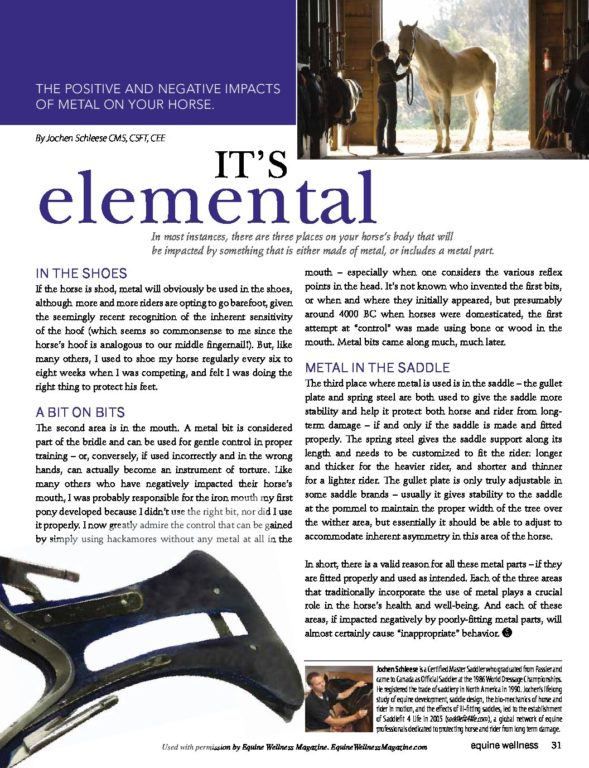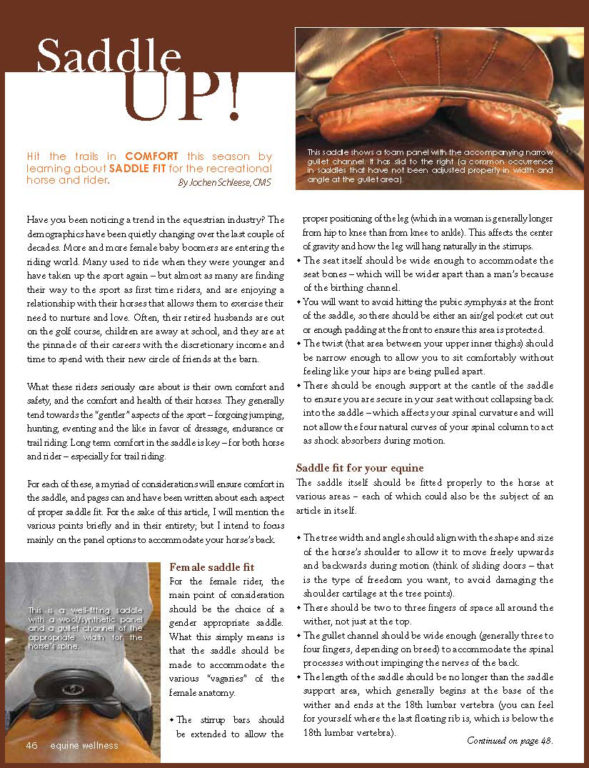- Flying Changes
There have been many recent articles in all sorts of publications discussing “how to slow down the rushing horse”; “how to ride the stumble out of your horse”; “how to make your horse go forward”; how to, how to, how to. Many of these negative and unwanted horse ‘behaviors’ may actually be due to something as simple as a poorly fitting saddle. This can cause an instinctive reaction by impacting reflex points, rather than the horse consciously ‘acting out’. These articles point to the fact that many of these indicators are a result of rider error, and attempt to address corrections by either offering solutions to change rider behavior (or training methods), or – more drastically – calling in a vet to administer pharmaceuticals to address specific issues…

